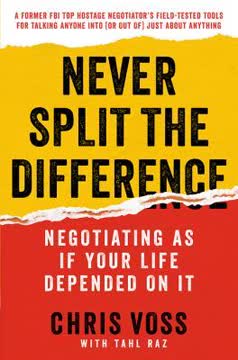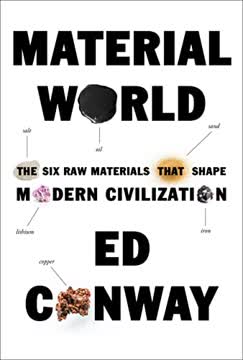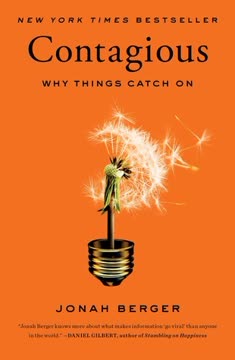Key Takeaways
1. MEDDICC: A Qualification Methodology for Enterprise Sales
MEDDICC provides a methodology in which the organization can correctly and thoroughly qualify deals to ensure efficient and effective selling.
Qualification, not sales. MEDDICC is not a sales methodology dictating go-to-market strategy or messaging style. It's a qualification framework designed for complex enterprise sales with multiple stakeholders and intricate solutions. It works with any sales methodology, acting as the essential sidekick to ensure focus and efficiency.
Born from necessity. Created at PTC in the 90s by Dick Dunkel and Jack Napoli, based on insights from John McMahon, MEDDIC (the original acronym) emerged from analyzing why deals were won, lost, or slipped. It provided a standardized framework for communication, qualification, and execution during a period of rapid growth and high sales attrition.
Predictable revenue. Implementing a robust qualification methodology like MEDDICC is crucial for sales leadership aiming to create predictable revenue. It ensures efficient resource allocation by focusing seller time on winnable deals and improves forecast accuracy, enabling confident investment in growth strategies.
2. Time is a Seller's Most Precious Asset: Qualify Relentlessly
Time is a Seller's most precious asset.
Protect your time. Elite Sellers understand that their most valuable resource is time, and they protect it fiercely by relentlessly qualifying opportunities. Chasing unqualified deals drains not only the seller's time but also the time of supporting resources like sales engineers and leadership.
Avoid sunken costs. The Fallacy of Sunken Costs leads sellers to persist with unqualified deals because of the effort already invested. MEDDICC provides a clear framework to identify red flags early and qualify out, saving future effort and allowing focus on better opportunities. As the author notes, "I regret qualifying out of that opportunity." - Nobody ever.
Qualification equation. Improving qualification directly increases success. By qualifying better, you either save time by abandoning unlikely deals or uncover crucial data points to win. This is the opposite of the flawed "effort + time = success" equation often pursued by less effective sellers.
3. Discovery is a Mindset: Always Be Curious
Discovery is a mindset.
Continuous curiosity. Unlike a single stage in the sales process, discovery is an ongoing mindset. Deals are dynamic, with changing criteria, processes, and stakeholders, requiring sellers to constantly seek new information to stay current and effective.
Active listening. Being curious means actively listening to understand the message behind the words, not just listening to reply. This builds trust and encourages customers to elaborate, providing deeper insights into their goals, challenges, and pains. As Theodore Roosevelt said, "No one cares how much you know until they know how much you care."
Earn the right. Effective discovery starts with thorough research (organization, industry, people, internal, third parties). This preparation earns credibility and allows sellers to ask "big questions" (What's working/not? Whom does it affect? How much does it cost?) that uncover valuable, quantifiable pain.
4. Metrics: Quantify Value, Drive Urgency
Metrics are the quantifiable measures of value that your solution can provide.
Proof and ROI. Metrics come in two forms: M1s (Metrics Proof Points) are the business outcomes delivered for existing customers, providing social proof. M2s (Return on Investment) are the specific, quantified values your solution will provide to the prospect, built collaboratively based on discovery.
Business case foundation. Metrics are essential for building a compelling business case for investment. They translate the impact of solving pain into tangible numbers (e.g., increased revenue, reduced costs, saved time) that resonate with stakeholders, especially the Economic Buyer.
Drive urgency. Metrics help answer the crucial "Why now?" question. By quantifying the cost of inaction or the value of immediate implementation, metrics create urgency. As John Kaplan says, "Small problems receive big discounts, and big problems receive small discounts." Metrics prove the problem is big.
5. Economic Buyer: The Ultimate Decision Authority
The Economic Buyer can say “No” when other people say “Yes” and “Yes when other people say “No”.
Beyond the budget holder. The Economic Buyer (EB) is the person with overall authority, often having access to discretionary funds and P&L responsibility, not just owning a specific budget. Identifying the true EB requires looking beyond job titles to their power, influence, and alignment with strategic objectives.
Engage strategically. Engaging the EB is critical but requires skill. Leverage your Champion for introductions and coaching on the EB's style and priorities. If direct introduction isn't possible, consider going direct yourself or aligning your senior executives with their peers at the customer.
Talk their language. When engaging the EB, focus on their business objectives and the three Cs: Cost (total investment, including resources), Completion (time to value), and Confidence (stakeholder buy-in). Avoid technical jargon; speak in terms of business outcomes and ROI to make an immediate impact.
6. Decision Criteria: Define What the Customer Needs
The Decision Criteria is the sets of principles, guidelines, and requirements that an organization uses to make a decision.
The 'What'. Decision Criteria (DC) are the standards used to evaluate solutions. They can be formal (RFPs) or informal (stakeholder consensus) and typically include Technical, Economic, and Relationship elements. Understanding the source of the DC (analysts, competitors, internal) is key.
Influence the criteria. Elite Sellers actively influence the DC, especially when it's undefined or unfavorable. By uncovering unique differentiators through deep discovery, quantifying their value with Metrics, and gaining consensus with the Champion, sellers can turn their strengths into customer requirements.
Visibility and consensus. Make the DC visible to all stakeholders, articulating it clearly and neutrally (e.g., in a shared document). Continuously validate how your solution scores against the DC, addressing concerns openly. Linking DC to Metrics reinforces value and differentiates you from competitors.
7. Decision Process: Map How the Customer Buys
The Decision Process is a series of steps that dictates how your customer will make a decision.
The 'How'. The Decision Process (DP) outlines the steps the customer will take to evaluate, select, and approve a solution. It includes Technical Validation (demos, POCs) and Business Approval (stakeholder reviews, committee sign-offs).
Uncover and validate. It's the seller's job to uncover the DP early and validate each step with relevant stakeholders. Never assume the initial understanding is complete; new steps are often added. Work backwards from a target go-live date to map dependencies and timelines.
Go-Live Plan. A collaborative Go-Live Plan (shared document) is an elite tool for managing the DP. It provides visibility of steps, owners, and deadlines, driving urgency and accountability. It also serves as a central repository for deal information, encouraging customer engagement and collaboration.
8. Paper Process: Navigate the Final Steps to Close
The Paper Process is the steps or actions that lie in place ahead of contracts being agreed and signed.
The final mile. The Paper Process (PP) covers everything from vendor selection to signed contract, including legal, procurement, and final approvals. While sometimes included in the Decision Process, separating it highlights its critical importance, especially for forecasting accuracy.
Champion support is vital. Navigating the PP requires strong support from your Champion. They help map the steps, identify stakeholders (Process, People, Timing), confirm timelines, and advocate for your deal's prioritization. Don't ease up on validation, even if your Champion says they have it covered.
Proactive engagement. Engage with PP stakeholders like Legal and Procurement as early as possible. Use the Go-Live Plan to map these steps and their dependencies. Being proactive, especially with NDAs or standard terms, can prevent delays and build trust, ensuring a smoother path to close.
9. Implicate the Pain: Make the Problem Urgent
Implicating the Pain means you have both Identified, Indicated, and Implicated the Pain your solution solves upon your customer.
The Three I's. Pain isn't just identified; it must be indicated (quantified) and implicated (made to feel urgent and impactful). This transition elevates the problem from something the customer might solve to something they must solve now.
Types of pain. Pain can be Financial (lost revenue, increased costs), Efficiency (wasted time, resources), or People (low productivity, morale, turnover). Tracing the pain to its owner and understanding its impact on their objectives is crucial.
Quantify and connect. Use discovery to uncover pain, quantify its cost with Metrics, and link it directly to the Decision Criteria. By making the customer feel the severity of the pain (implication), you increase their appetite for a solution and create the urgency needed to accelerate the deal.
10. Champion: Your Essential Internal Advocate
“No Champion, No Deal” which is a very astute view.
More than a coach. A Champion is not just friendly or informative (a Coach). They must have power and influence, act as an internal seller for you (publicly and privately), and have a vested interest in your success (if you fail, they fail; if you win, they win).
Build and test. Continuously build your Champion's knowledge of your solution's value (Solution) and their understanding of internal politics (Political). Test their power/influence, their willingness to sell for you internally, and their vested interest. An untested Champion is not a Champion.
Leverage their influence. Your Champion is critical for navigating the Decision and Paper Processes, introducing you to key stakeholders like the Economic Buyer, and defending your solution against competitors or internal resistance. They are your eyes and ears inside the customer organization.
11. Competition: Understand All Threats, Focus on Your Strengths
The Competition is any person, vendor, or initiative competing for the same funds or resources you are.
Beyond rivals. Competition includes not just rival vendors but also internal build initiatives, other projects vying for resources, and inertia (the decision to do nothing). Inertia is often the biggest competitor, indicated by a lack of pain, EB engagement, or defined process.
Don't knock. Criticizing competitors is unprofessional, makes you look weak, and can alienate the customer. Instead, focus on highlighting your unique strengths and differentiators. Use discovery to uncover pains that only your solution solves and quantify that value with Metrics.
Set traps. Use Trap-Setting Questions to subtly highlight your strengths and your competition's weaknesses without direct criticism. These questions encourage the customer to consider aspects where you excel, ideally leading to those points being added to the Decision Criteria. Develop a Competitive Strategy Plan to understand the political, technical, and commercial landscape.
Last updated:
Review Summary
MEDDICC receives positive reviews for its comprehensive coverage of the sales qualification methodology. Readers praise its practical insights, applicability across roles, and potential to improve sales performance. Many find it valuable for enterprise sales and complex B2B cycles. Some criticize repetitiveness and occasional typographical errors. The book is seen as a thorough introduction to MEDDICC, offering actionable guidance for sales professionals. While some find it dry, others appreciate its structured approach and real-world examples. Overall, it's recommended for those seeking to implement a consistent qualification process.
Similar Books










Download PDF
Download EPUB
.epub digital book format is ideal for reading ebooks on phones, tablets, and e-readers.




